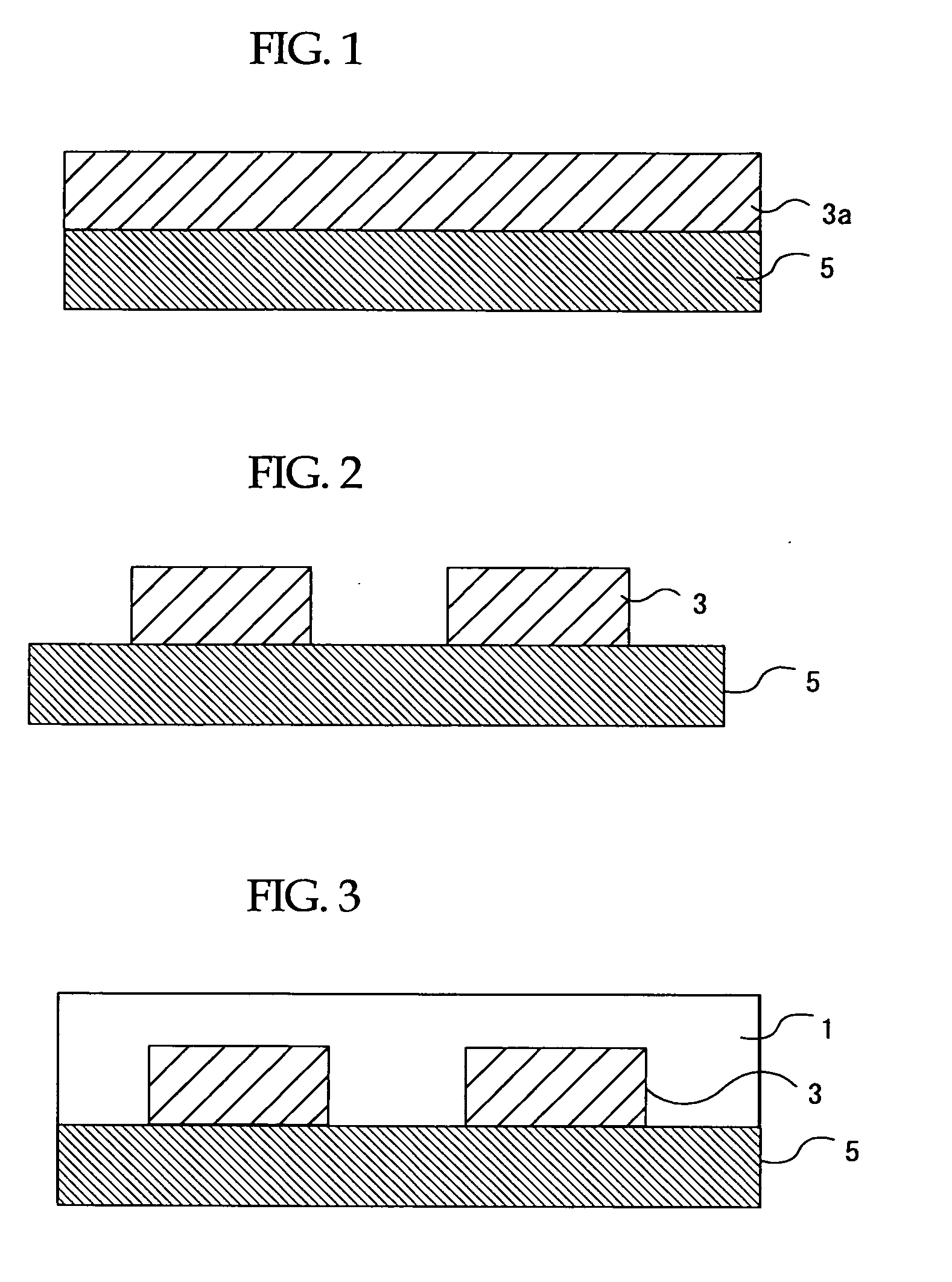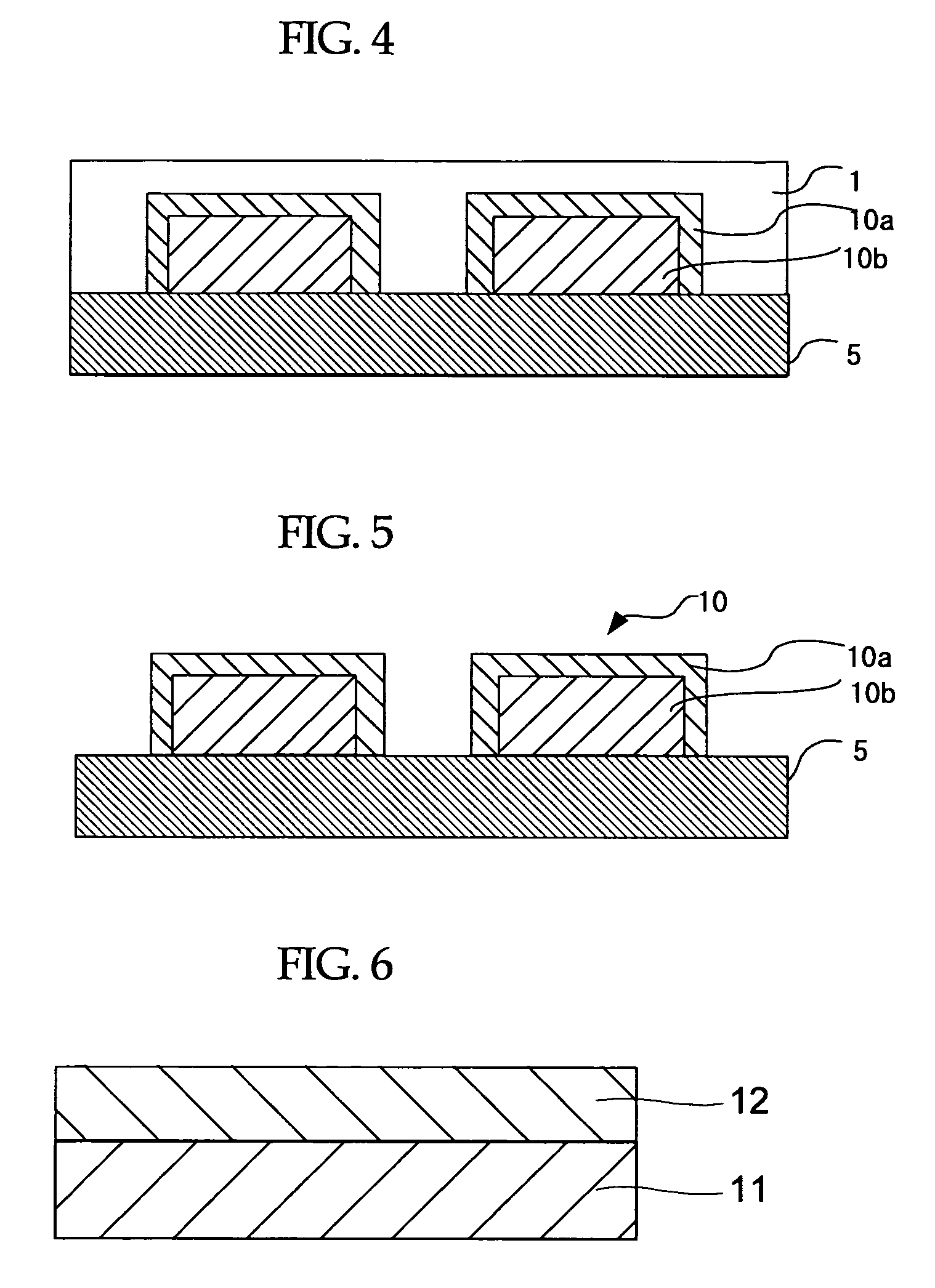Method for forming resist pattern, semiconductor device and production method thereof
a semiconductor device and resist pattern technology, applied in the field of methods, can solve the problems of difficult to develop resist materials suitable for shorter wavelengths, inability to form finer wiring patterns, and inability to meet the requirements of shortening the wavelength of exposure lights, so as to achieve uniform thickness, improve the effect of uniform thickness, and ensure the desired thickness level
- Summary
- Abstract
- Description
- Claims
- Application Information
AI Technical Summary
Benefits of technology
Problems solved by technology
Method used
Image
Examples
example 1
[0167]The hole patterns, formed in accordance with the same procedure as the thickening experiment of resist pattern described above, were thickened using the resist pattern thickening materials B and D under the conditions below.
Condition
[0168]1. coating: two times, baking: one time, developing: one time;
[0169]2. coating and baking: each two times, developing: one time;
[0170]3. coating and baking: each five times, developing: one time;
[0171]4. coating and baking and developing: each two times;
[0172]5. coating and baking and developing: each five times.
[0173]In the conditions 1 to 5 described above, the coating, the baking and the developing were respectively carried out in accordance with the same procedures as those of the thickening experiment of resist pattern described above; when these steps were carried out plural times, they were repeatedly carried out under the same conditions.
[0174]The thickened levels of the resulting resist patterns are shown in Table 3 in terms of the d...
example 2
[0177]Thickened resist patterns were formed using the resist pattern thickening materials B and D shown in Table 1 described above. The thickened patterns were trench patterns of various sizes of space or trench shown in “Space Pattern Size before Thickening” in Table 4, which were formed from an alicyclic ArF resist (GAR-D05, by Fuji Film Electronic Materials Co.). The trench patterns were thickened to prepare thickened resist patterns under the conditions 4 and 5 shown in Example 1 and the normal condition.
[0178]The decreased level (mm) of the space pattern size formed from the resulting thickened resist pattern was shown in Table 4 in terms of the difference of space pace pattern sizes between before and after the thickening along with the initial pattern size before the thickening.
TABLE 4Decreased Levelof SpaceSpace Pattern SizePattern Size afterbefore ThickeningThickening (nm)Condition(nm)Material BMaterial Dnormalcoating, baking and developing126.06.915.2192.09.018.0269.010.62...
example 3
[0181]As shown in FIG. 6, interlayer dielectric film 12 was formed on silicon substrate 11, and as shown in FIG. 7, titanium film 13 was formed by a sputtering process on the interlayer dielectric film 12. Then as shown in FIG. 8, resist pattern 14 was formed by a conventional photolithographic process. By using the resist pattern 14 as a mask, the titanium film 13 was patterned by reactive ion etching to form openings 15a. Reactive ion etching was continuously carried out to remove the resist pattern 14, at the same time, as shown in FIG. 9, openings 15b were formed in the interlayer dielectric film 12 by using the titanium film 13 as a mask.
[0182]Then the titanium film 13 was removed by a wet process, and as shown in FIG. 10, TiN film 16 was formed on the interlayer dielectric film 12 by a sputtering process. Subsequently Cu film 17 was grown by an electrolytic plating method on the TiN film 16. Then as shown in FIG. 11, planarizing was carried out by CMP such that the barrier met...
PUM
| Property | Measurement | Unit |
|---|---|---|
| relative permittivity | aaaaa | aaaaa |
| wavelength | aaaaa | aaaaa |
| wavelength | aaaaa | aaaaa |
Abstract
Description
Claims
Application Information
 Login to View More
Login to View More - R&D
- Intellectual Property
- Life Sciences
- Materials
- Tech Scout
- Unparalleled Data Quality
- Higher Quality Content
- 60% Fewer Hallucinations
Browse by: Latest US Patents, China's latest patents, Technical Efficacy Thesaurus, Application Domain, Technology Topic, Popular Technical Reports.
© 2025 PatSnap. All rights reserved.Legal|Privacy policy|Modern Slavery Act Transparency Statement|Sitemap|About US| Contact US: help@patsnap.com



